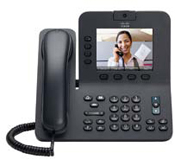Persistence Pays Off With UC Project For Big Client
By Pedro Pereira, Business Solutions magazine.
It took five years for solutions provider Colligio to persuade a big client to replace a 29-year-old phone system with a Cisco UC solution that includes voice, videoconferencing, and instant messaging. It wasn’t that the client didn’t want to make the switch, but budget considerations kept pushing back the project — until the company’s senior management decided it could wait no longer. “They are a long-term customer, and we had the project on the table for a number of years,” recalls Sean Kelley, president of Colligio.
The client, which owns a large chain of movie theaters, was relying on an aging digital phone system, which was expensive to run, at end of support, and offered none of the features of modern systems (e.g. caller ID, direct inward dial lines for individual staff members, conference calling capability, videoconferencing). “Caller ID, which has been around for many years, was now a new feature to them,” says Kelley.
Phase One: A Two-Month Deployment
Once Colligio got the go-ahead, Kelley, whose nineperson company focuses on collaboration technologies and video integration, assessed the client’s needs and prepared an implementation plan. The project would be completed in phases, starting in September 2010, when the equipment Colligio ordered from Cisco arrived on-site.
The Cisco solution includes two Unified Computing System (UCS) blade servers loaded with all the software necessary to run the system in a virtualized environment. Colligio also deployed a Video Communication Server (VCS) control unit to route videoconferencing calls, a VCS Expressway firewall traversal appliance to handle videoconferencing communications beyond the network’s firewall, and Cisco 8945 videophones and 7945 handsets for 155 users.
In addition, a Cisco Unified Workspace Licensing Professional license provides the client with access to Cisco Collaboration Software as a bundle. Applications include Cisco Jabber, which provides a single interface for IM (instant messaging), voice, video, and desktopsharing software. “What this system brings is really the ability to have all of the client’s sites connected eventually into one platform, and the ability to do video, voice, IM, and presence from site to site,” Kelley says.
Despite replacing the old phone system, Colligio was able to integrate two standards-based Polycom 7000 endpoint teleconference units. “They’re old, but they still work, and they are still in the client’s remote locations, so we were able to protect that investment,” Kelley says.
Phase one consisted of deployment at company headquarters, which took about two months, with two Colligio engineers handling technical tasks while trainers brought the client’s staff up to speed on the technology. The Cisco system uses the data network, therefore completely replacing the old digital technology, which allowed Colligio to install the new phones and run them alongside the old ones. The phone company furnished temporary numbers so the system could be tested while the old one was still in use, says Kelley.
 Colligio now is embarking on phase two, which will include installing Cisco’s MeetingPlace conference bridge and Jabber technology, to make it possible for staff to join meetings from their computers and phones. Later phases will potentially involve deploying the full solution in more than 30 movie theater locations, which could take up to a year. In the process, the number of people using the system will at least double to 350, says Kelley.
Colligio now is embarking on phase two, which will include installing Cisco’s MeetingPlace conference bridge and Jabber technology, to make it possible for staff to join meetings from their computers and phones. Later phases will potentially involve deploying the full solution in more than 30 movie theater locations, which could take up to a year. In the process, the number of people using the system will at least double to 350, says Kelley.
A Step Toward Future Projects
While the project is still ongoing, Kelley says the customer already is starting to get a return on the investment by turning off some of the expensive PSTN (public switched telephone network) lines and switching to an Internet Protocol network that is more efficient and less expensive to operate. For its part, Colligio also can start reaping the benefits of the deployment by showing off its capabilities to other prospective large customers. “This was kind of a flagship installation for us,” he says. “It demonstrates how all the technologies work together to make the customer’s staff more efficient.”
